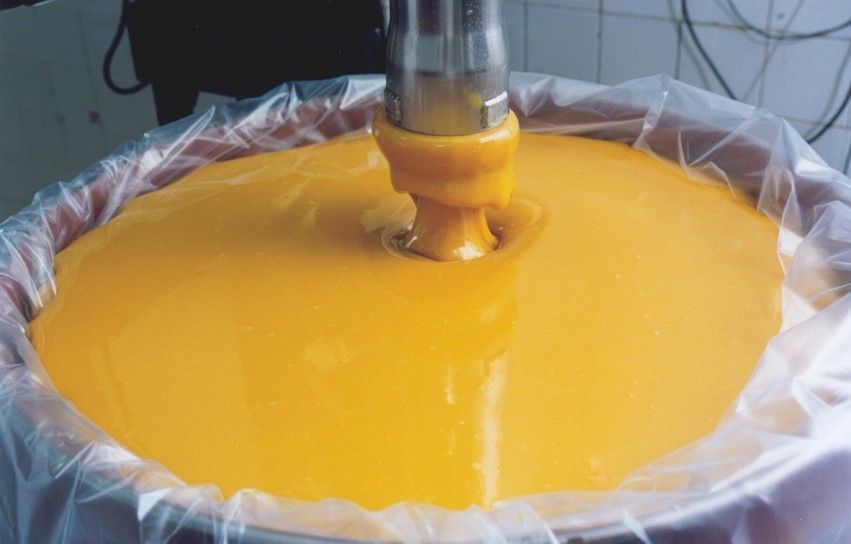“From concentrate” is a term commonly found on the labels of various fruit juices and beverages. It refers to a specific method of processing and producing fruit juices, particularly when the juice is not directly extracted from fresh fruit but rather undergoes a process to remove water before being packaged and sold.
When a juice is labeled as “from concentrate,” it means that the juice has been made by removing a significant portion of the water content from the original fruit juice. Here’s how the process generally works:
- Juice Extraction: The process begins with the extraction of juice from the fruit. The fruit is crushed or pressed to release its liquid content, including the natural sugars, flavors, vitamins, and minerals present in the juice.
- Water Removal: The extracted juice is then subjected to a process where a significant portion of the water content is removed. This is typically done by heating the juice to evaporate the water. The result is a concentrated juice that contains a higher concentration of sugars, flavors, and nutrients.
- Storage and Transport: The concentrated juice is often easier to store and transport due to its reduced volume. It takes up less space and weighs less than the original juice.
- Reconstitution: Before being packaged and sold to consumers, the concentrated juice is reconstituted by adding the appropriate amount of water back to the concentrated juice. This step brings the juice back to a more typical liquid consistency and restores its original flavor profile.
Advantages and Disadvantages
The “from concentrate” method of processing fruit juices has garnered attention for its inherent advantages and limitations, each contributing to the overall perception of these juices in the market. This approach presents a unique set of pros and cons, shaping consumers’ preferences and considerations when selecting their beverages.
Advantages: Enhancing Practicality and Sustainability
One notable advantage of the “from concentrate” process lies in its practicality. The removal of water from the juice significantly reduces its volume, making transportation and storage far more efficient. This reduction in bulk not only decreases the space required for shipping but also lessens the carbon footprint associated with transportation, aligning with sustainability initiatives. Moreover, the concentrated form allows for an extended shelf life, minimizing waste and providing consumers with a longer window to enjoy the product.
Furthermore, the reduced weight of the concentrated juice translates to cost savings during transportation. Shipping costs are curtailed, benefiting both manufacturers and consumers. This economic advantage can often be reflected in the more affordable price points of “from concentrate” juices compared to their non-concentrated counterparts.
Disadvantages: Flavor Complexity and Quality Considerations
However, critics of the “from concentrate” process raise concerns regarding the potential loss of delicate flavor compounds. Certain volatile compounds, responsible for the vibrant and nuanced fruit flavors, can be compromised during the evaporation and reconstitution steps of concentrating the juice. As a result, some argue that “from concentrate” juices may lack the full complexity of taste found in juices made directly from freshly squeezed fruit.
Despite these concerns, it’s important to emphasize that the “from concentrate” label does not inherently equate to inferior quality. The ultimate quality of the juice depends on various factors. The initial quality of the fruit used, the specifics of the manufacturing process employed by the brand, and adherence to stringent quality control standards all contribute to the final product’s character and taste.
Consumer preferences also come into play, with diverse tastes and priorities guiding their choices. Some individuals gravitate toward juices labeled as “not from concentrate” or “freshly squeezed” for a more authentic and less processed experience. They prioritize beverages that closely resemble the natural taste of the original fruit. On the other hand, a significant portion of consumers find “from concentrate” juices to be a practical and cost-effective option that still offers convenience and a satisfactory flavor profile.
Conclusion
In conclusion, the “from concentrate” process introduces both practical benefits and potential flavor-related drawbacks to the world of fruit juices. It offers increased transportation efficiency, extended shelf life, and reduced costs—features that align with modern consumer demands for convenience and sustainability. While concerns about flavor complexity exist, the overall quality of “from concentrate” juices is influenced by multiple factors, and personal preferences play a decisive role in the choices consumers make. As the beverage industry continues to evolve, the debate between “from concentrate” and “not from concentrate” juices underscores the intricate balance between practicality, flavor integrity, and consumer discernment.






